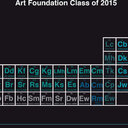Examination of the patient with a knee dislocation. The case for selective arteriography.
Mots clés
Abstrait
One hundred fifteen patients with a unilateral knee dislocation underwent arteriography to examine the popliteal artery. The incidence of popliteal artery injury was 23% (27 patients). Clinically, 29 (25%) of the 115 patients had an abnormal ipsilateral pedal pulse and 23 (79%) of these 29 patients had an arteriographically identified popliteal artery injury. Twenty-two arteries were surgically repaired and one was treated without surgery. Eight-six patients had normal pulses; the arteriogram showed no abnormalities in 77, demonstrated spasm in five, and revealed an intimal flap in four. All 86 patients were treated without surgery and had no delayed vascular complications. This demonstrates that the vascular examination is an accurate predictor of major popliteal artery injury following knee dislocation. Patients with an abnormal pedal pulse warrant arteriography due to a high incidence (79%) of popliteal artery injury. Patients with normal pulses may be monitored by clinical examination only. Popliteal artery injuries in this group are minor and rarely require intervention.


